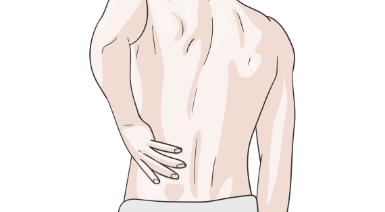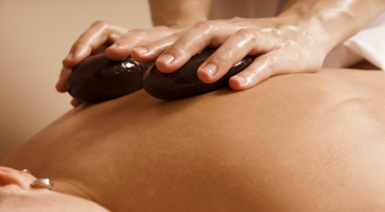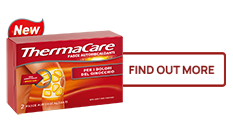Heat therapy for pain relief
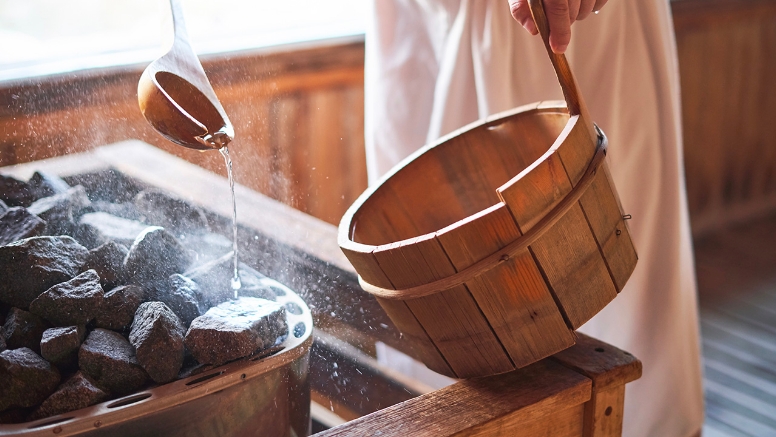
Contents:
What is heat therapy?
Heat therapy is the therapeutic application of heat to the body to treat pain and non-inflammatory conditions. Heat has a relaxing effect on the muscles and can thus help against pain caused by tension.
How does heat therapy work?
Heat therapy helps in three ways: It increases blood flow, stimulates tissue metabolism and helps restore the damaged tissue and reduces the perception of pain.
Due to the increased blood flow to the affected area, more oxygen and nutrients are provided to the damaged cells and metabolic waste products are removed more quickly, contributing to relieve pain and help restore the damaged muscle to its normal state.
The applied heat also stimulates the heat receptors. This temperature stimulus competes with the pain stimulus for transmission to the brain. The result: Fewer pain stimuli reach the brain and the pain is perceived less intensely.
When is heat therapy used?
Heat therapy is particularly effective for reducing pain and increasing function in unspecific neck and back pain after excessive or improper strain, sprain, overexertion, muscular tension or osteoarthritis.
Heat therapy: Contraindication
In the case of acute inflammatory processes (24 to 72 hours from the onset), heat therapy is counterproductive as it would intensify the inflammatory process. In cases of cardiovascular problems, diabetes, fever, rheumatoid arthritis and pregnancy you should be careful in using heat therapy. In these cases, seek medical advice before treating your pain with heat.
Heat or cold for pain
Acute/traumatic damage with inflammation and edema (during the first hours after an acute injury) should be treated with cold. Remember that cold is a good pain killer, but alone has not a draining action: it is suggested to use cold combined with compression. Heat on the other hand, helps once the acute inflammatory phase is over, to facilitate healing of the injured tissue. Heat is not recommended for acute inflammation.
Heat therapy different types
Different types of heat therapy exist and they are often used in combination with other practices like massages. But heat therapy is also effective on its own for muscle pain and some of the variants are suitable for heat therapy at home.
Heat therapy through hot air or infrared
This type of heat therapy is very well known due to the popular red light lamp. Infrared light penetrates the upper layer of the skin and is transmitted as heat to the deeper layers. This promotes blood circulation and relaxation of the muscles.
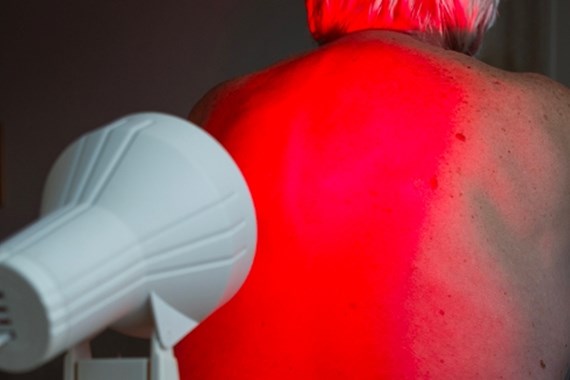
Heat pack
In a heat pack, a substance that stores heat is applied to the body and pressed tightly. For example, natural moor, special gels and the mineral mud fango are used for heat therapy. This allows the heat to penetrate into the muscle layers improving blood flow. Heat packs can last for a good amount of time and is not limited to the affected area.
Ultrasound heat therapy
In ultrasound heat therapy, an ultrasound probe is placed on the affected area. This emits waves in rapid succession, which generate heat.
Heat pillow
Cherry pit pillows or heat pads with other fillings are found in many households and are well suited for private use. The pillow is usually heated in the microwave and placed on the painful area. The applied heat stimulates the blood circulation. Heat pillows usually have a more superficial effect than mud packs, for example.
Heat wraps/patches
A heat patch or wrap is applied to the painful area and then warms it for many hours. In contrast to most heat plasters, ThermaCare® HeatWraps do not generate a heat reaction on the skin, but supply heat coming from their external heat cells. This allows the heat to penetrate deeper and promote blood flow and muscle relaxation for up to 8 hours.
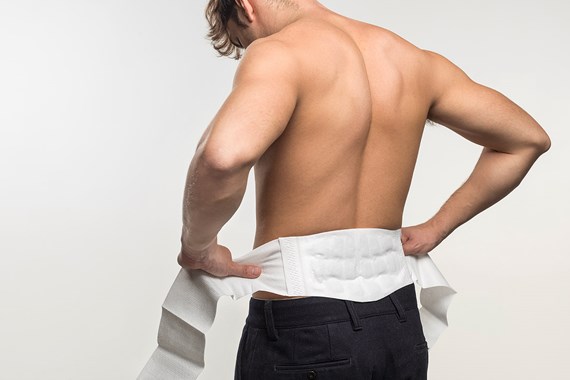
Hot roll
The hot roll consists of one or two thick towels that are rolled up tightly and soaked with hot water. Then the hot towels are slowly rolled out on the area to be treated and pressed onto the skin similar to a massage.
Heat therapy at home
You can easily perform heat therapy at home. Red light lamp, heat pillows and heat plasters or wraps are particularly suitable for this. The advantage of the red light lamp is that it can be flexibly directed at any part of the body. When using it, however, pay attention to the operating instructions so that you do not get burned.
Heat pillows such as millet or cherry pit pillows are simply heated in the microwave and placed on the painful area of the body. With the help of a blanket or a cloth you can fix the pillow and prevent the pillow from heating the air.
Self-adhesive heat patches or heat wraps such as those from ThermaCare® are particularly suitable for neck and back pain. Once applied, the heat wrap gives off a therapeutic heat of approx. 40 °C for at least 8 hours and pain relief up to 16h*. This way you can move freely and benefit from the effects of heat therapy.
-
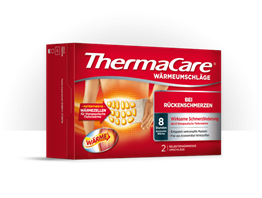
THERMACARE® THERMACARE® for back pain
for the treatment of muscular tension and pain in the lower back -
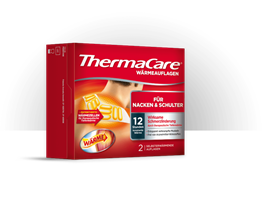
THERMACARE® For neck and shoulder and wrist
for the treatment of neck, shoulder and wrist pain -
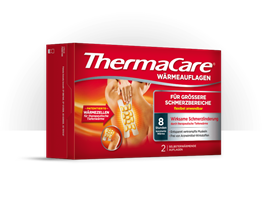
THERMACARE® For larger painful areas
to treat pain in upper leg, middle and upper back -

THERMACARE® For localised pain
for flexible application in shoulder, middle-upper back
FREQUENTLY ASKED QUESTIONS
- What kind of pain does heat help with?
-
Acute, persistent or chronic non-specific neck or back pain due to muscular tension can be relieved by heat therapy. Heat is good for stomach cramps or back or neck pain. In the case of muscle tension, heat should only be used if there is neither acute inflammation nor swelling (72 hour after the onset of pain). If you are unsure whether this is the case, we recommend that you seek medical advice.
- What is better for inflammation: Heat or cold?
-
Cold is a good pain-killer, but it has no antinflammatory effect and it doesn’t help the drainage alone. It is recommended in the first 24 to 72 hours from the onset of pain or after a trauma, combined with compression. Heat helps once the acute inflammatory process is over to facilitate healing of the injured tissue.
- Why does heat relieve pain?
-
Heat increases blood flow and stimulates tissue metabolism promoting healing, and reduces the perception of pain.
- What is heat therapy?
-
Heat therapy is the therapeutic application of heat to the body for pain relief and health. Superficial heat (meaning heat applied from an external source) at temperatures of around 40 °C is used for therapeutic purposes over a long period of time. It is used alone or as part of a multimodal treatment approach (with physiotherapy for example) to treat pain and non-inflammatory conditions. Heat has a relaxing effect on the muscles and can thus help against pain caused by tension.
